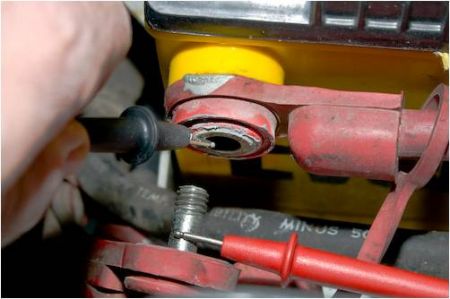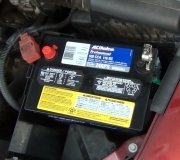Hello,
Here is a guide that can help you see if the problem is easy:
https://www.2carpros.com/articles/car-battery-dead-overnight
Also
I searched through about three hundred or more TSB and came up with a couple of things.
The first one below states the when diagnosing battery draws on trucks equipped with the automatic dual zone HVAC controls (RPO CJ2), technicians should keep in mind that the control head does not completely go to sleep and may drain the battery. Before I go any further on this do you have manual or automatic HVAC controls?
Automatic Dual Zone HVAC Battery Draw
TECHNICAL SERVICE BULLETIN
Reference Number(s): 02-01-39-007B, Date of Issue: November 05, 2007
Affected Model(s): 2004-2007 Buick Rainier; 2003-2008 Cadillac Escalade Models; 2002-2008 Chevrolet TrailBlazer; 2003-2008 Chevrolet Avalanche, Silverado, Suburban, Tahoe; 2002-2008 GMC Envoy Models; 2003-2008 GMC Sierra, Yukon Models; 2002-2004 Oldsmobile Bravada; 2003-2008 HUMMER H2, H3; 2005-2008 Saab 9-7X
Supercedes: This bulletin is being revised to add models and model years. Please discard Corporate Bulletin Number 02-01-39-007A (Section 01 - HVAC).
Related Ref Number(s): 02-01-39-007, 02-01-39-007A, 02-01-39-007B
ARTICLE BEGINNING
SERVICE INFORMATION
When diagnosing battery draws on trucks equipped with the automatic dual zone HVAC controls (RPO CJ2), technicians should keep in mind that the control head does not completely "go to sleep" until after 150-250 minutes, or up to 4-1/4 hours, from when the ignition key is turned OFF. This is a normal condition. In these cases, do not replace the control head.
Now they also had a TSB on Parasitic drain, I put that here so I would not lose it, and for your information, but before we do that load test let's look at a couple of other things.
Battery Parasitic Drain
TECHNICAL SERVICE BULLETIN
Reference Number(s): 02-06-03-010A, Date of Issue: July 02, 2004
Affected Model(s): 2005 and Prior Passenger Cars and Trucks; 2003-2005 HUMMER H2; 2003-2005 Isuzu Light Duty Trucks
Supercedes: This bulletin is being revised to add the 2004 and 2005 model years. Please discard Corporate Bulletin Number 02-06-03-010 (Section 06 - Engine).
Related Ref Number(s): 02-06-03-010, 02-06-03-010A
ARTICLE BEGINNING
SERVICE INFORMATION
In automotive terms, a parasitic drain is an electrical load that draws current from the battery when the ignition is turned off. Some devices, such as the PCM and the radio memory are intended to draw a very small amount continuously. These draws are measured in milliamps (mA).
In normal use, parasitic drains aren't usually cause for concern, because the battery is replenished each time the vehicle is driven. But, in long-term parking situations, parasitic drains may discharge the battery enough to cause a no-start condition. New vehicles in dealer stock and airport long-term parking are two such situations.
An abnormal parasitic drain could be a glove-box or luggage compartment light that remains on but undetected. Or an electronic component may malfunction and cause a parasitic drain that is larger than normal specification.
PARASITIC DRAINS AND ON-THE-LOT BATTERY DISCHARGE
IMPORTANT: In most cases of discharged batteries in low-age, low-mileage vehicles, proper charging procedures with approved charging equipment is the only repair necessary.
Here are some rules of thumb that might help relate parasitic drains to how long a battery would last on a parked vehicle.
The Reserve Capacity (RC) rating multiplied by 0.6 gives the approximate available ampere-hours (AH) from full charge to complete rundown. Somewhere between full charge and complete rundown, the battery will reach a point at which it can no longer start the engine, although it may still operate some of the electrical accessories.
Using up about 40% of the total available AH will usually take a fully-charged battery to a no-start condition at moderate temperatures of 25 °C (77 °F). Put another way, for a typical battery in a storage situation, depleting the available AH by 20 to 30 AH will result in a no-start condition.
IMPORTANT: If the battery begins storage at 90% of full charge, reduce the available AH accordingly.
The recommendation for maximum parasitic drain is around 30 mA (0.030 amp). A typical drain today actually falls into the 7-12 mA range, even though some vehicles do approach the maximum. Multiply the drain (in amps) by the time (in hours) the battery sits without being recharged. The result is the amount of AH consumed by the parasitic drain. The actual drain may be small, but over time the battery grows steadily weaker.
Here's an example: a vehicle with a 30 mA drain and a fully-charged 70 RC battery will last 23 days. But if that battery is at only 65% of full charge (green dot barely visible), it is going to last only 15 days before causing a no-start.
EFFECTS OF TEMPERATURE ON A STANDING BATTERY
The parasitic drain will be fairly constant over a range of temperatures. The important temperature is that of the vehicle at the time a start is attempted. Colder temperature raises the threshold of a no-start by increasing the residual power needed. When the temperature falls to 0 °C (32 °F), the battery will be able to put out only about 85% of its normally available starting power, and the engine may need as much as 165% of the usual power to start.
The combined effect of these two factors is to reduce the number of days the battery can stand with a parasitic drain. At 0 °C (32 °F), the battery can stand only half as long as it could at 25 °C (77 °F). And at -19 °C (0 °F), the standing days are reduced to one-fourth.
Temperatures above the moderate climate of 25 °C (77 °F) increase the battery's internal self discharge. If the battery is in a locale where the temperature is averaging 32 °C (90 °F), an additional 5% to 10% of the available ampere-hours will be lost in a month due to self-discharge within the battery. At temperatures below the moderate range, self-discharge will be low enough to be negligible compared to the parasitic loss.
WHAT THE POLICIES AND PROCEDURES MANUAL SAYS ABOUT PARASITIC DRAINS
Because determining how long a battery may last in a storage situation is not precise, the P & P manual provides a clear-cut policy, excerpted here.
"Discharged batteries can freeze at temperatures as high as 0 °C (32 °F), causing permanent damage. Other permanent damage may result from allowing batteries to stand discharged for extended periods."
"To alleviate this condition, the negative battery cable should be disconnected on vehicles which are not going to be in service within a 20 day period, beginning from the time the vehicle is shipped. If this is not possible, batteries should be recharged periodically, every 20-45 days, until the green eye is visible."
"Disconnected batteries will slowly discharge, especially with higher temperatures; therefore, even disconnected batteries should be checked every four months and recharged if necessary."
"Vehicles on display are subject to battery discharge due to drains from courtesy lights and other accessories. Provision to maintain battery state of charge for these vehicles will be necessary."
Consult your P & P manual for full details.
TRACKING DOWN THE SOURCE OF A PARASITIC LOAD
If the battery in a vehicle becomes discharged in a shorter time than described earlier, the vehicle may have an out-of-specification parasitic load. Refer to Service Information (SI) for procedures for locating parasitic drains. Follow these steps:
1. Build the vehicle.
2. Select the Engine section.
3. Select the Engine Electrical sub-section.
4. Select Diagnostic Information and Procedures.
5. Select Battery Electrical Drain/Parasitic Load Test.
You will need the J 38758 Parasitic Draw Test Switch and a digital multimeter set to the 10A scale.
IMPORTANT: Read the procedure and follow the steps exactly as described in SI. The following is a summary, not the complete procedure.
The test switch permits you to place an ammeter in series with the battery negative cable. Before performing the test, the engine must be run and all accessories must be operated as instructed. After shutting the ignition off, turn the test switch off. Now, all the current being used by the vehicle is shunted through the ammeter where it is measured. If the reading is out of specification, the procedure explains how to pinpoint the cause.
A FINAL WORD ABOUT BATTERY TESTING
Your dealership has an essential tool, the Midtronics Micro 410 Battery Tester, J 42000. Use it to quickly identify batteries that are serviceable and can be charged. Refer to Corporate Bulletin Number 02-06-03-006A for more information about this tool.
This one was interesting as the ignition switch does not always turn off.
Diagnostic Information for Intermittent Vehicle No Crank/Dead Battery
TECHNICAL SERVICE BULLETIN
Reference Number(s): 04-06-03-002, Date of Issue: February 05, 2004
Affected Model(s): 2004 Buick Rainier; 2000-2004 Cadillac Escalade; 2002-2004 Cadillac Escalade EXT; 2003-2004 Cadillac Escalade ESV; 1998-2004 Chevrolet Blazer, S-10 Pickup; 1999-2004 Chevrolet Silverado; 2000-2004 Chevrolet Suburban, Tahoe; 2002-2004 Chevrolet Avalanche, TrailBlazer, TrailBlazer EXT; 2003-2004 Chevrolet Express; 1998-2004 GMC Jimmy/Envoy, Sonoma; 1999-2004 GMC Sierra; 2000-2004 GMC Yukon, Yukon XL; 2002-2004 GMC Envoy, Envoy XL; 2003-2004 GMC Savana; 2004 GMC Envoy XUV; 1998-2004 Oldsmobile Bravada; 2003-2004 HUMMER H2
Related Ref Number(s): 04-06-03-002
ARTICLE BEGINNING
SERVICE INFORMATION
When diagnosing a concern regarding an intermittent vehicle no crank or dead battery, technicians should remove and reinstall the ignition switch using the Ignition Switch Replacement procedure in the Steering Wheel and Column section of SI. The ignition switch may have been misindexed in the steering column during a previous replacement .
If the ignition switch is misindexed in one direction, the ignition switch circuits will not be completely open when the ignition switch is in the OFF position with the key removed. This may result in lights remaining on or instrument panel lights illuminating, which will drain the battery. If the ignition switch is misindexed in the opposite direction, the ignition circuits will open correctly but the ignition switch may not close the crank circuit properly when the ignition key is turned to the crank position. This will result in a no crank concern.
This is my suggestion;
First, see if you can have your truck in total darkness and see if the glove box light or any other lights are on very dim.
If not then I would pull the fuses below and see if that makes a difference.
Under-hood fuse block left side near battery pull ignition A Fuse 40 Amp and ignition B Fuse 40 Amp.
Next, how old is your battery? This may be as you read above with the HVAC if you have that system (please let me know) then it may drain your battery quicker.
Please go to Auto Zone (AZ) or O Reilly's (or) and for free they can pull the codes to the car. Most important: Once they check your codes, if they find something and you do not get it fixed and need to get back with us, please make sure you tell us exactly what the code was, number and all. Example, if the code was E0568 O2 sensor bad. Then make sure you give us all of that. While there for free also they can bring their tester out and check your battery and alternator.
The big thing I am checking here is the strength of your battery, they may say it is getting weak. Make sure it is fully charged before you have them check it.
Then if needed I will send you more information on how to do a parasitic draw test. Unless you want it right now and I will be glad to provide that. Just let me know.
I just did not want to flood you with too much information. Just let me know.
Friday, December 18th, 2020 AT 9:12 AM



